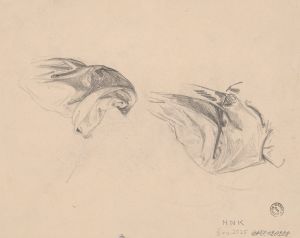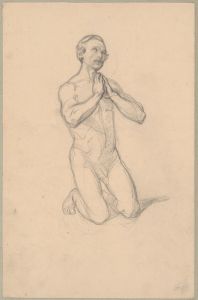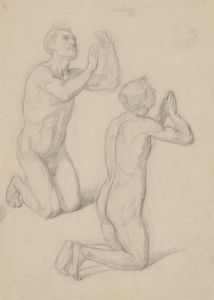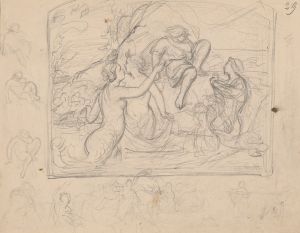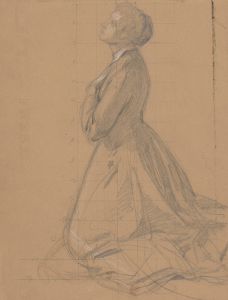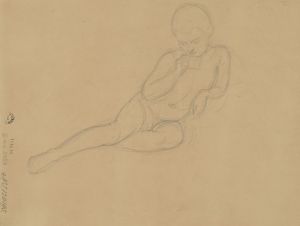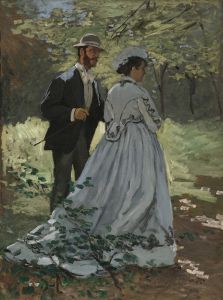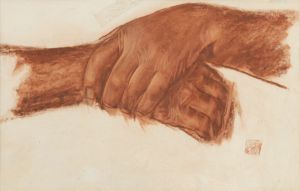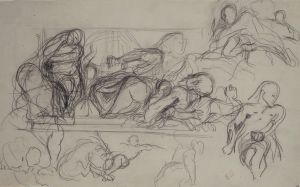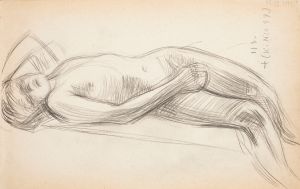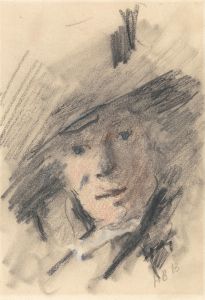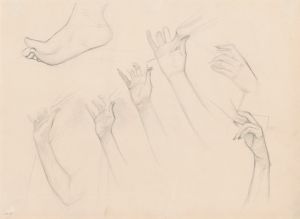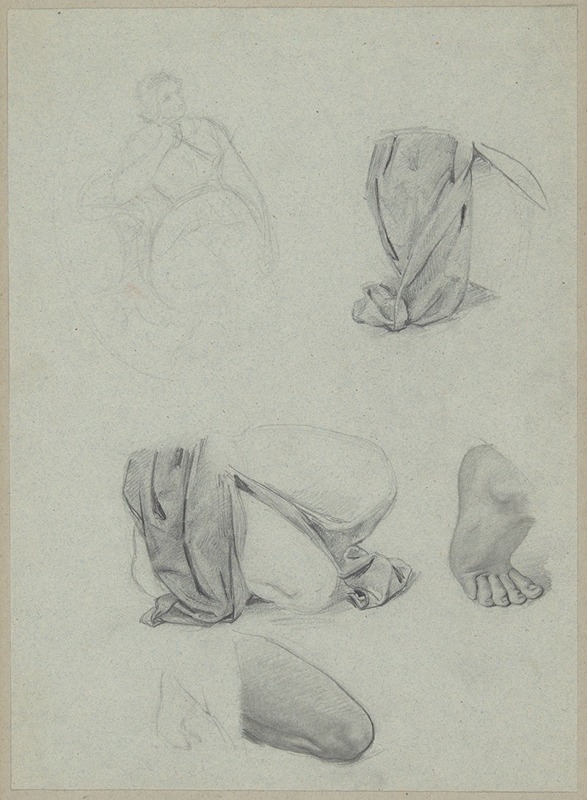
Sketch to the Portrait of Jadwiga Łuszczewska – Deotyma and Studies of Fragments of a Kneeling Figure
A hand-painted replica of Józef Simmler’s masterpiece Sketch to the Portrait of Jadwiga Łuszczewska – Deotyma and Studies of Fragments of a Kneeling Figure, meticulously crafted by professional artists to capture the true essence of the original. Each piece is created with museum-quality canvas and rare mineral pigments, carefully painted by experienced artists with delicate brushstrokes and rich, layered colors to perfectly recreate the texture of the original artwork. Unlike machine-printed reproductions, this hand-painted version brings the painting to life, infused with the artist’s emotions and skill in every stroke. Whether for personal collection or home decoration, it instantly elevates the artistic atmosphere of any space.
Józef Simmler, a prominent Polish painter of the 19th century, is known for his contributions to Romanticism and historical painting. Among his works is the piece titled Sketch to the Portrait of Jadwiga Łuszczewska – Deotyma and Studies of Fragments of a Kneeling Figure. This artwork is a preparatory sketch that reflects Simmler’s meticulous approach to composition and detail, which he often employed in his creative process.
The sketch features Jadwiga Łuszczewska, also known by her pen name "Deotyma," a celebrated Polish poet, novelist, and improviser of the Romantic era. Łuszczewska was a significant cultural figure in 19th-century Poland, renowned for her literary talent and her ability to perform poetic improvisations, a skill that captivated audiences of her time. Simmler’s depiction of her in this sketch suggests an intention to capture not only her physical likeness but also her intellectual and artistic essence.
The artwork also includes studies of fragments of a kneeling figure, which may have been part of Simmler’s broader exploration of human form and posture. These studies demonstrate his dedication to understanding anatomy and movement, which were essential elements in his artistic practice. Such preparatory sketches were common in Simmler’s oeuvre, as they allowed him to refine his ideas and techniques before completing a final composition.
While the exact date of this sketch is not documented, it is consistent with Simmler’s style and methods during his active years in the mid-19th century. The piece is an example of his ability to blend portraiture with elements of historical and literary significance, a hallmark of his artistic legacy.
Today, Józef Simmler is remembered as one of Poland’s most accomplished painters of his time, and works like this sketch provide insight into his creative process and the cultural milieu of 19th-century Poland. The sketch is preserved as part of the collection of the National Museum in Warsaw, where it contributes to the understanding of Simmler’s artistic development and his role in Polish art history.





